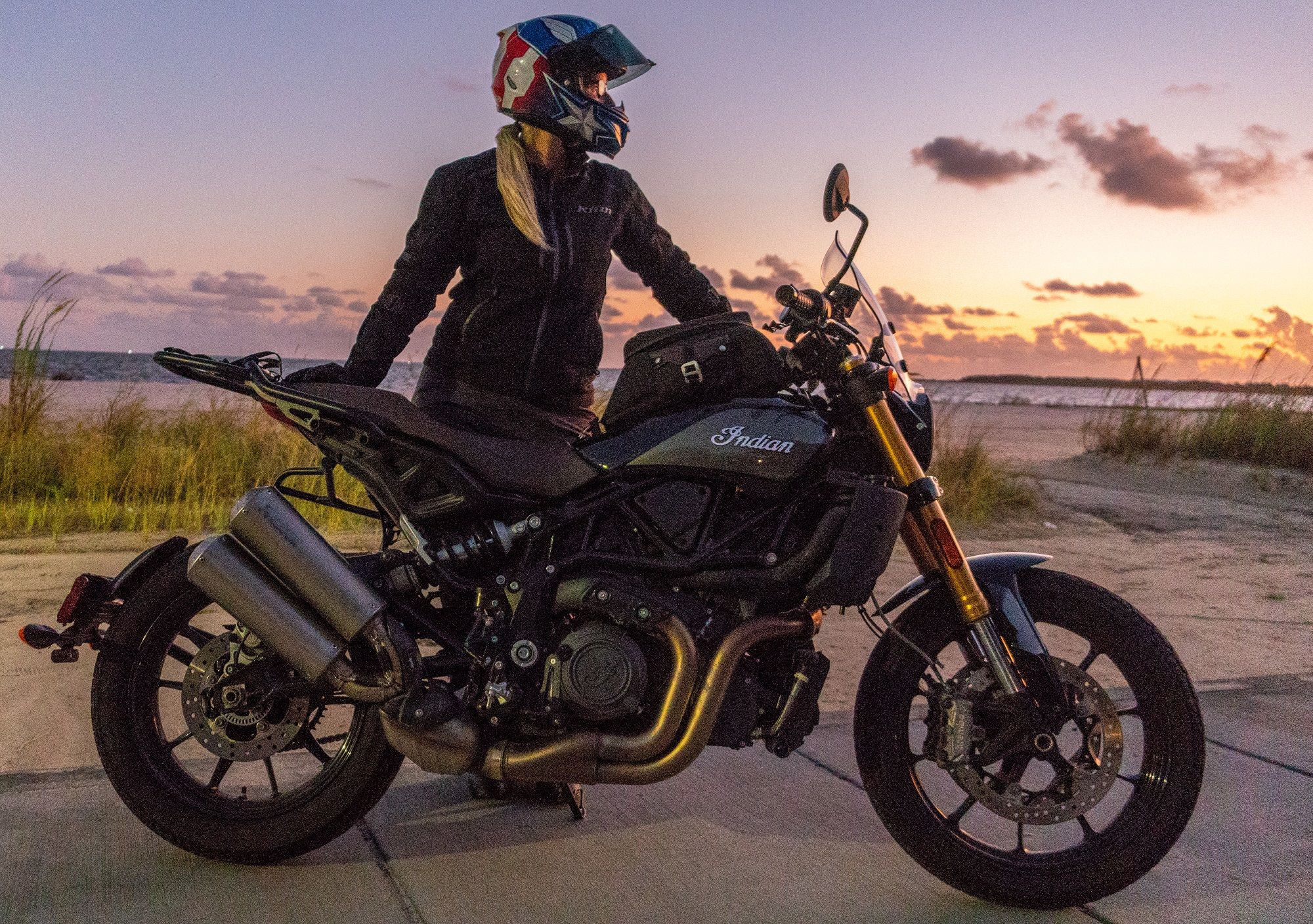Review: 2020 Indian FTR 1200 S

An Exciting American Flat Tracker Built for the Street
I remember thinking a few years back when riding the Indian Scout for the first time that the V-twin platform had potential, but I longed for a sportier chassis with better brakes and suspension. Fast-forward to the present and Indian has satisfied that desire with the new FTR 1200 S.

Indian’s racing history dates back to 1903, when co-founder and chief engineer Oscar Hedstrom won an endurance race and set a new world speed record of 56 mph. Over the next 50 years, Indian dominated American racetracks, and their team, The Wrecking Crew, took home some of the most impressive victories in flat track racing. In 2016, Indian returned to flat track with their FTR750 and the formation of the new Indian Wrecking Crew, which took back-to-back championships in 2017 and 2018.

Modeled after the FTR750, the FTR 1200 S is a race-inspired design with tube trellis frame and swingarm, Brembo brakes, Sachs adjustable suspension, Akrapovič exhaust, cruise control, and three ride modes with optional ABS and traction control. You can save a little money by forgoing the exhaust and electronics package, but the rider aids provide a level of safety I expect on a modern street bike. The LCD screen provides the usual info, plus ride mode selection and two display options, which allow you to choose between a modern-style analog or a digital look.
Speaking of ride modes, your adjustable-on-the-fly options are the typical rain, standard, and sport. Sport’s more aggressive throttle response means paying close attention to wrist positioning and clutch control to avoid snappiness during roll on/off around town, but out in the twisties the extra punch makes me giggle like a schoolgirl. Standard and rain modes provide a more manageable and smooth response for general street use, which is especially nice for commuting and touring. I did find that the transmission does not always agree to aggressive shifting, favoring slower gear changes, but after 3,000 miles it seemed to smooth out a bit.

The FTR 1200 S uses an upgraded version of the Scout engine, a DOHC 60-degree V-twin that brings 123 horses to the table with an easy twist of the wrist. I love an aggressive V-twin, and the FTR has not disappointed with its snarly low- and mid-range torque (87 lb-ft) that catapults the bike out of corners.
This motorcycle truly has flat tracking in its DNA, and while the racing is done on a hard pack dirt track, the FTR 1200 S is right at home on the gravel and dirt roads I often find myself exploring. Indian doesn’t claim it to be a dual-sport, but it handled everything I threw at it with ease. A 19-inch/18-inch wheel set (along with great suspension) handles minor rocks and washboard without a second thought, and the long wheelbase means it likes to kick sideways in low traction situations but once there behaves in a surprisingly composed manner. On the highway, the seating position is moderately aggressive yet comfortable for long hauls. I found that any riding condition is suitable for the FTR, be it twisties, broken pavement and dirt roads, or open highway.

A variety of accessory packages are available to cater to your intended use. Mine was equipped with the touring package consisting of a windshield, small amount of luggage, and a rear luggage rack, all of which was convenient while traveling.
With the traditional flat track style and performance to back it up, this flat tracker built for the street is all the motorcycle I have been waiting for. It’s the beginning of a new era of American motorcycling, and I couldn’t be more excited to see it coming from such an iconic American company.

